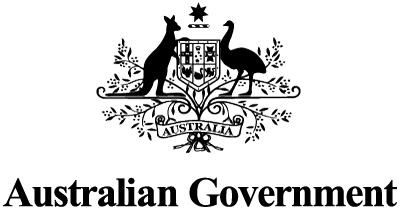Announcing… Mount Vandyke – NGT’s new restoration trial in the heart of Cobboboonee National Park
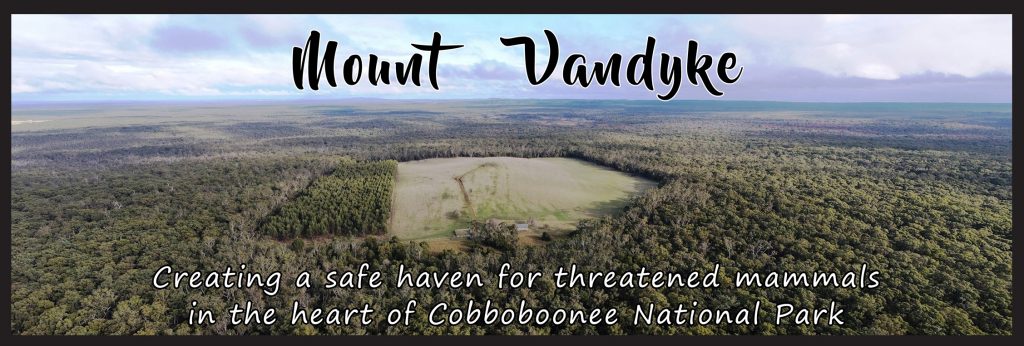
For any readers who have previously completed the stretch of the Great South West Walk through the Cobboboonee forest, you might recall that not long after you leave the Fitzroy Camp, a small in-lying parcel of private farmland suddenly appears, situated on a volcanic peak in the middle of the National Park.
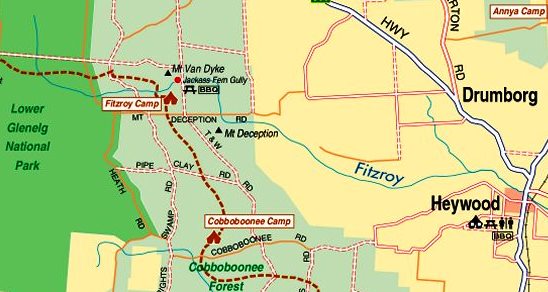
The walk skirts the edge of the block and then disappears back into the forest, which surrounds Mt Vandyke, as shown below.

This peak has been known on maps since European colonisation as Mount Vandyke, and by old time locals as the “Good Hill” – presumably for its reliable rainfall and rich volcanic soil that originally sustained open native grassland and sedgeland, likely created by millennia of traditional burning of the hill by Gunditjmara people. Indeed those burning practices, later copied by European pastoralists, also gave the wider forest a very different, more open and – in places – grassier character than its appearance today (as noted in the work of local historian Garry Kerr). Of note, there is also a fascinating cultural story recorded long ago about the wider area that we’ll share in a future blog, which suggests that Mount Vandyke was traditionally known as “Banbangil”.
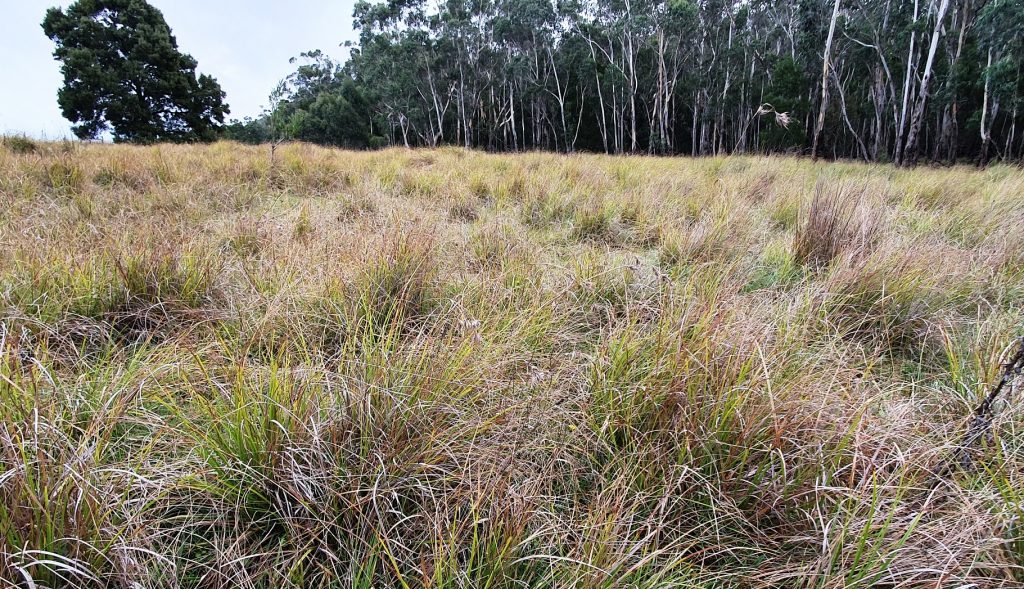
This 85 acre parcel of land presents a unique opportunity for NGT to embark on a very exciting and different type of restoration project – one that puts some of our threatened small mammal fauna (which is a topic we have spoken about for a long time at NGT) in the spotlight. While normally a modestly sized 85 acre block with a long history of farming and a more recent phase of commercial blue-gum forestry would not necessarily attract our attention, it is the location of Mt Vandyke that offers some tantalising possibilities.
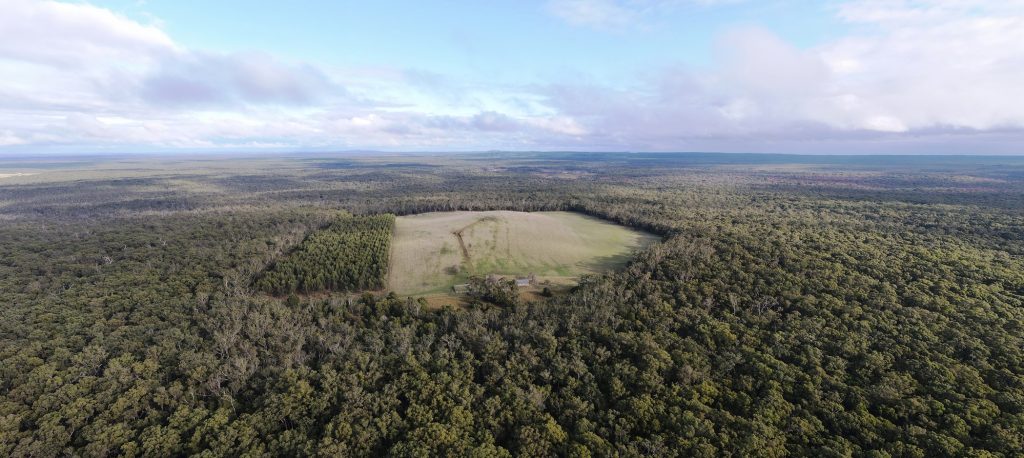
Firstly, that is because it is surrounded by two of south-west Victoria’s premier National Parks, Cobboboonee and Lower Glenelg, which together comprise an area of approximately 50,000 hectares of continuous native vegetation.
Yet despite the large size of these protected areas, this part of mainland Australia has experienced precipitous declines and/or extinctions of many species since the European Red Fox arrived (after its deliberate introduction in Victoria) over 120 years ago. Species that formerly occurred in this area that are now extinct in the wild on the mainland – but still occur in nearby Tasmania – include the Eastern Quoll, Rufous-bellied Pademelon, Eastern Bettong and Eastern Barred Bandicoot.

These species are an important part of the food-web and play critical functional roles in Australian ecosystems, like working the soil and dispersing seed or spores, but have now been missing in this area for many decades. Other nationally threatened medium sized mammals that have managed to hang on in these forests – at least for now – include the Long-nosed Potoroo and Southern Brown Bandicoot.
Secondly, and with these latter (still extant) species in mind, these parks also now happen to be home to one of Victoria’s longest running continuous fox-baiting programs, Glenelg Ark, which has seen DELWP and Parks Victoria actively suppressing foxes in the large forested area surrounding Mt Vandyke since 2005 to benefit these threatened species.
However up until now Glenelg Ark, despite its large-scale influence via introduced predator control, has not yet resulted in any value-adding trials in this wider landscape, and that is where this project will come into play – building on the existing good work of others.
Why is this project described as a ‘trial’?
Put simply, we are going to be planning, implementing and testing a different model of small mammal recovery and reintroduction.
Most small mammal recovery projects on the mainland have generally either sought to build large introduced predator-free exclosures to re-establish extinct species (think highly successful AWC-style fenced reserves), or alternatively aimed to suppress introduced predators over large unfenced landscapes to protect or recover threatened species that are still persisting (such as Glenelg Ark, Southern Ark in Gippsland or Western Shield in WA).
The NGT project at Mt Vandyke is actually looking to experimentally blend and test these concepts together, and to do so by reducing the scale (and hence cost) of the introduced predator-free enclosure, but then embedding it within a wider landscape where introduced predator control is occurring. Further, because we have a high rainfall, high fertility and therefore higher productivity site, the goal will be to adopt a fence design that has the capacity to “leak” future surplus animals being bred inside the fence, into that surrounding environment, supplementing or seeding populations of target species in the wider landscape where introduced predators are already being suppressed.
In doing so, we are looking to build on the extremely valuable recent experiences of the reintroduction project in Booderee National Park in NSW (see this ABC news article for the overview), where project managers have encountered difficulties in re-establishing species in a wider unfenced landscape without the benefit of ongoing population supplementation. At its core threatened species recovery is, after all, simply a numbers game – which means we need to find innovative and sophisticated ways to better manipulate the odds of recovery; that is, we need to tip the numbers in our favour to improve the probability of ongoing success.
If it turns out that our ‘leaky safe haven’ is eventually effective in re-establishing viable populations beyond the fence into a wider managed landscape, then this is a concept that could be replicated more broadly in similar situations in temperate regions (where less of this type of experimentation has occurred), seeding and sustaining re-established populations of threatened fauna outside of fences.
This new project is all about testing, trialing and refining this concept, as well as (at the very least) providing an additional safe haven (i.e. a form of insurance policy) for our target species in a semi-wild setting inside the fence. Our initial focal species for this project, which will help us determine and finalise the fence design, are: the threatened (but still locally occurring) Southern Brown Bandicoot and Long-nosed Potoroo; as well as the now extinct (but long-ago, once abundant) Eastern Quoll.

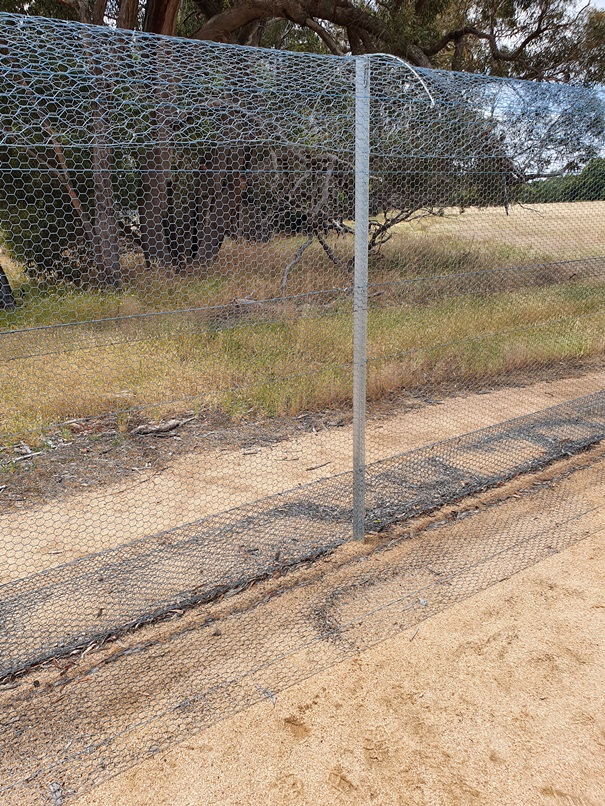
As long-term followers of NGT will be aware, these complex but vital restoration projects never come about in the perfect order!
Hence we are now concurrently working on the first two key steps, to get this project up and running:
- Paying off the land purchase debt as soon as we can (please follow this link to donate, or press the ‘donate today’ button below).
- Commencing the first steps of planning, designing and implementing the project (note that the first 12 months, working towards creating a safe haven for the Southern Brown Bandicoot and Long-nosed Potoroo, has been generously funded by the Australian Government), including:
- designing and building the fence
- removing feral species
- planning for the eventual staged release of our target species
Today we are just at the beginning and, as we embark on this new and exciting initiative, we are aware that we still have lots of key questions to address and issues to work through, as well as important conversations to have with future project partners.
With this in mind, it is fantastic to be able to announce that Dr Leah Kemp, who has 10 years of previous mammal reintroduction experience with the Australian Wildlife Conservancy, will be joining NGT in June in an advisory capacity as a Senior Threatened Species Ecologist to oversee the implementation of this new project, which will also be delivered by Rose Thompson, one of our Wildlife Ecologists.
If you would like to join us on the exciting journey ahead and contribute to this latest restoration initiative, please consider donating today!
This project is partly funded for the next 12 months by the Australian Government,
via the Bushfire Recovery for Wildlife and Habitat Community Grants Program.
